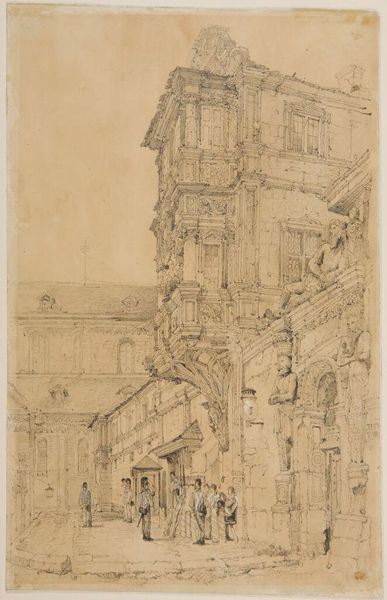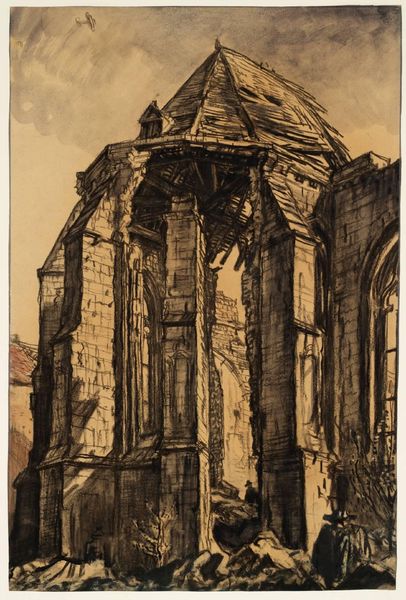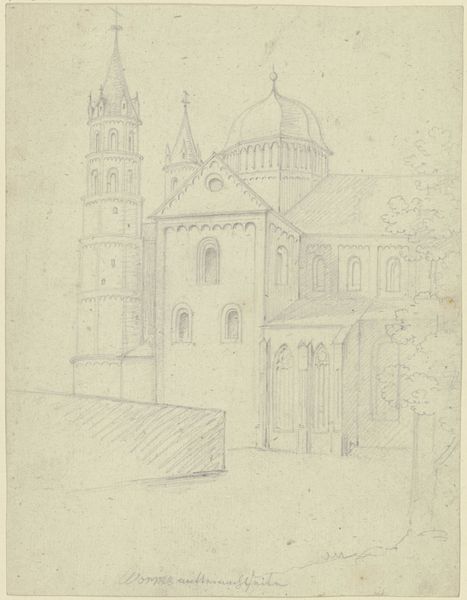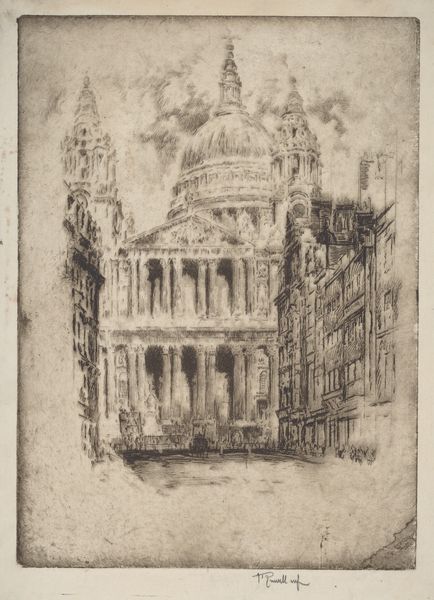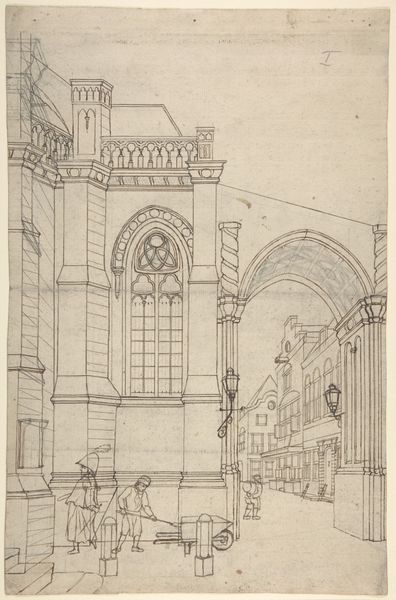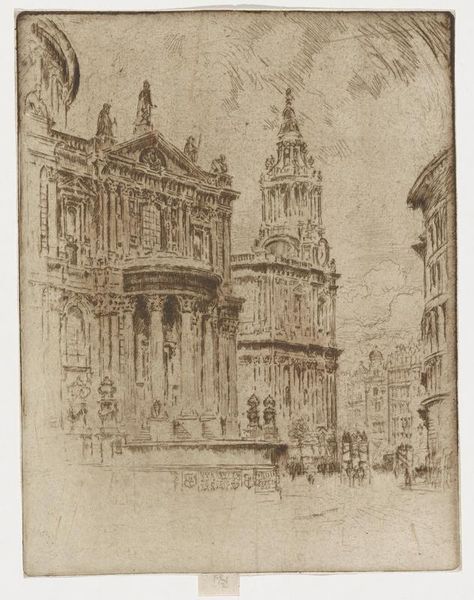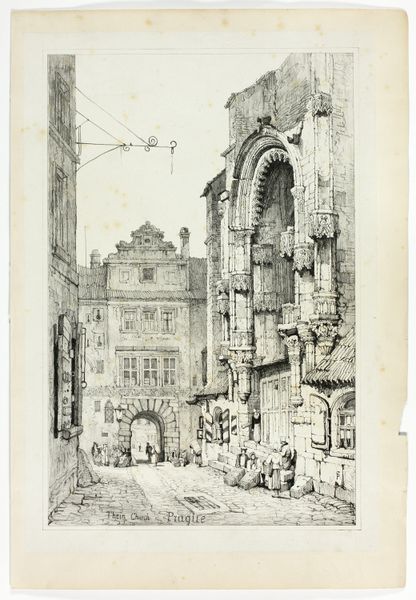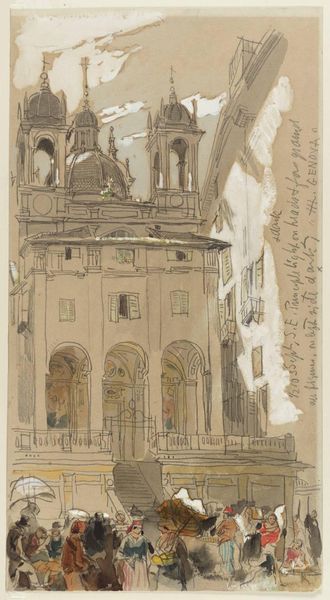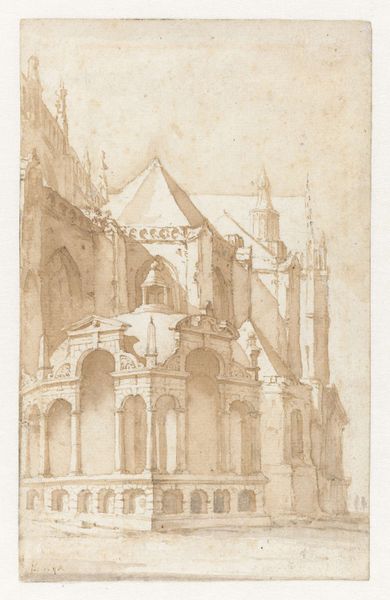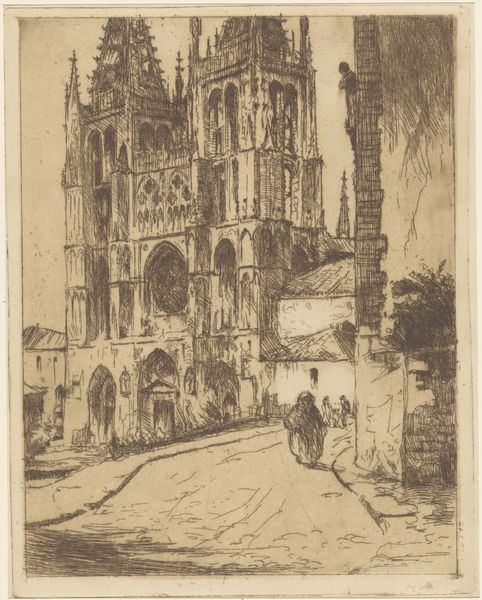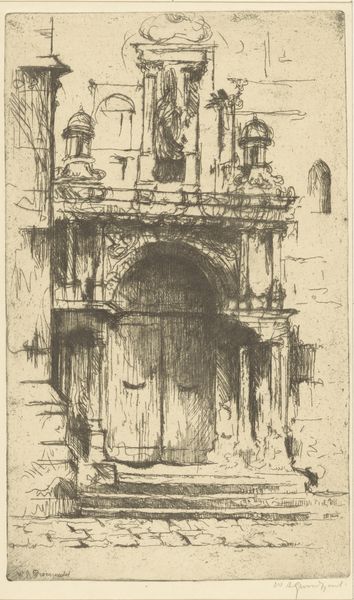
Dimensions: 50 Ã 34.5 cm (19 11/16 Ã 13 9/16 in.)
Copyright: CC0 1.0
Editor: This is John Ruskin's "Borromini's San Carlo a la Quatro Fontane, Rome," held at the Harvard Art Museums. It’s a beautiful sketch, but somewhat muted in tone. What can you tell me about its place in history? Curator: Ruskin's architectural studies, like this one, played a crucial role in shaping Victorian-era preservation efforts. He wasn't just drawing buildings; he was advocating for their cultural value at a time when rapid modernization threatened historic structures. Consider how his detailed renderings contributed to a broader public awareness. Editor: So, his art served a political purpose? Curator: Absolutely! Ruskin believed art had a moral imperative. By documenting buildings like San Carlo, he was making a case for the importance of preserving cultural heritage in the face of industrial progress. What do you make of the figures he includes at street level? Editor: They almost seem dwarfed by the architecture. Perhaps highlighting the church's dominance? Curator: Precisely. The artwork isn't just about the building's beauty, but about its power and enduring significance in the urban landscape. Editor: Fascinating. I’ll definitely look at Ruskin's work differently now!
Comments
No comments
Be the first to comment and join the conversation on the ultimate creative platform.

